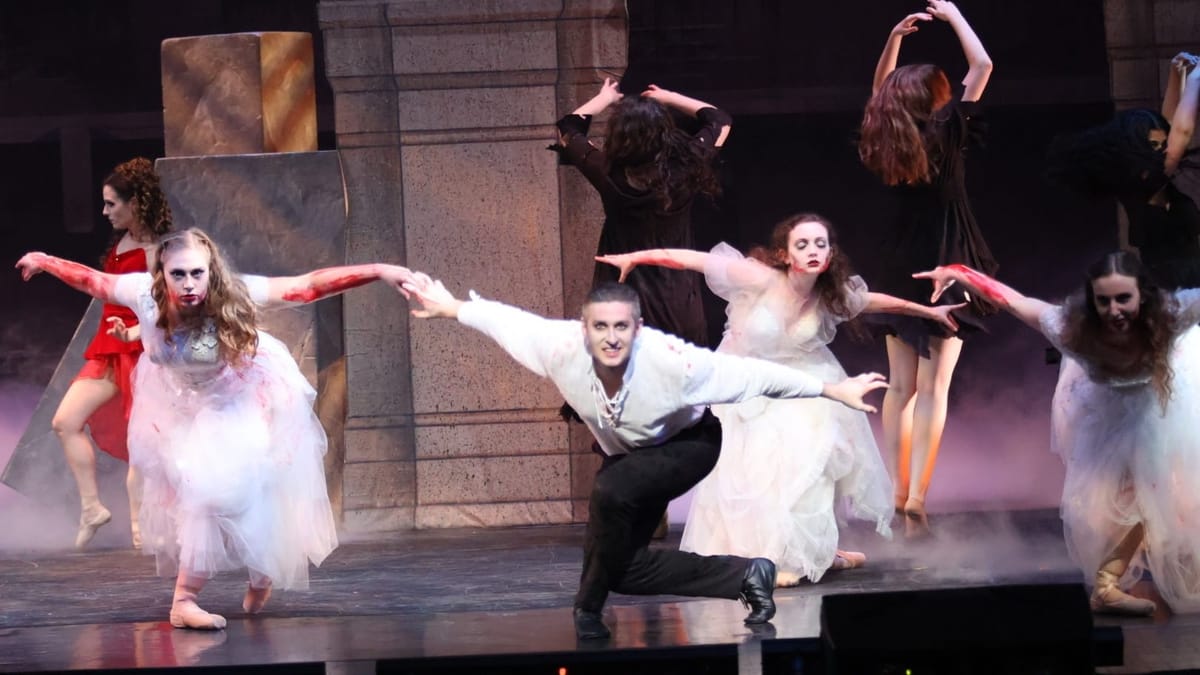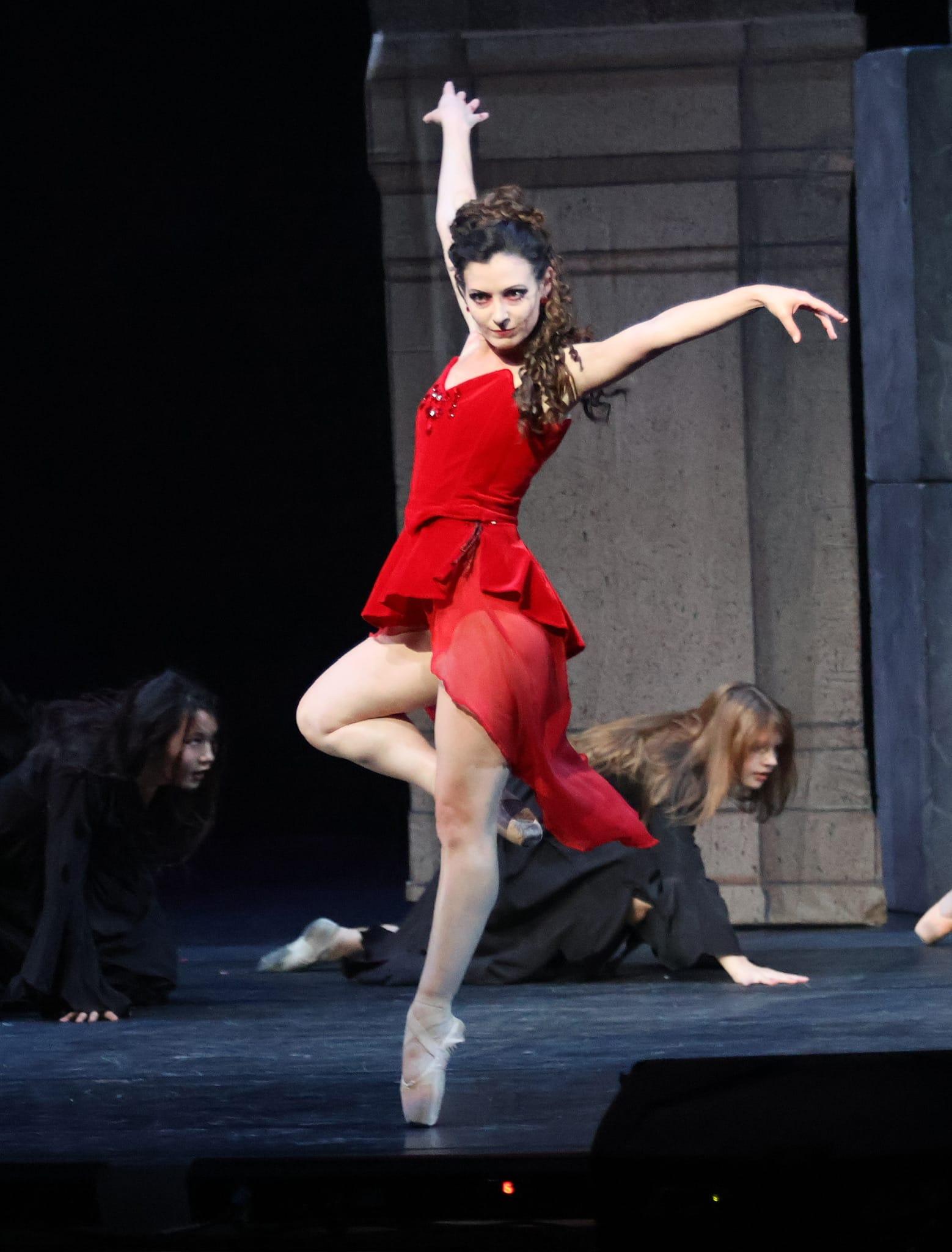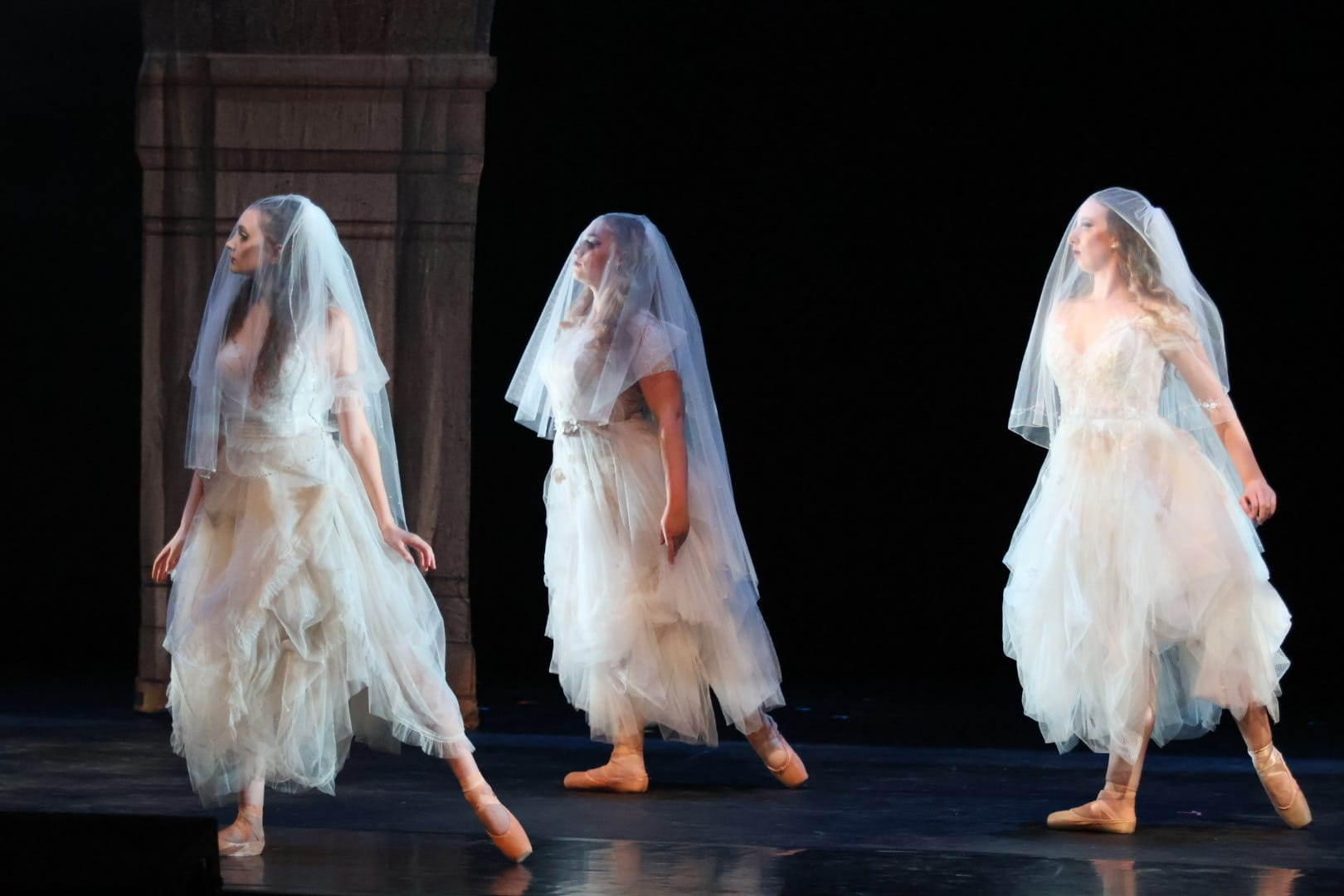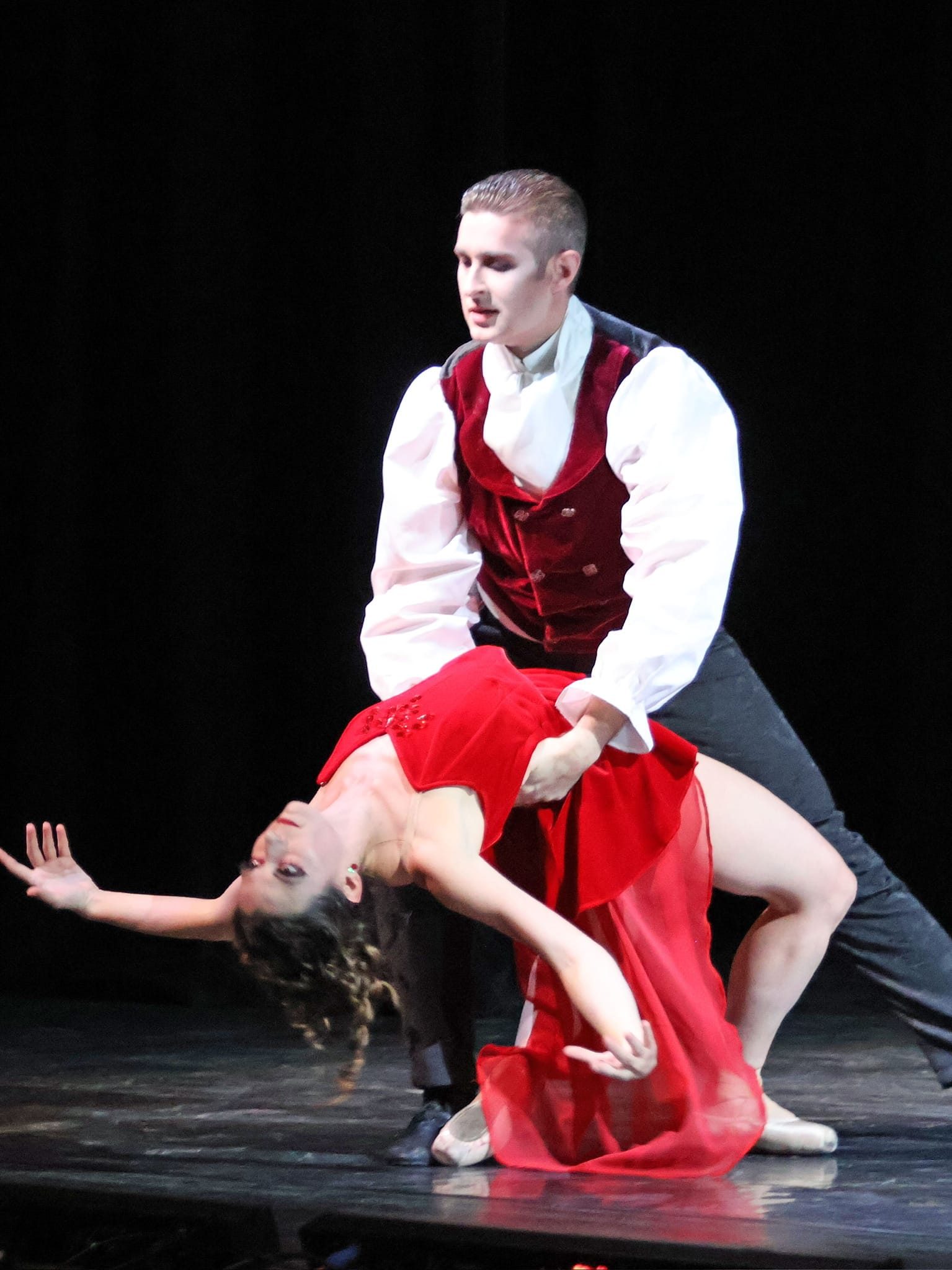With ‘Dracula,’ Ballet Wichita broadens the horizons for Wichita dancers and audiences
In its 50th season, the dance company ushers in a new era.

Ballet Wichita is known for its annual production of “The Nutcracker,” and its summer “Ballet in the Park” series. In its 50th season, the dance school and company has embarked on a radically new path that will reinvigorate Wichita’s dance scene.
Some 1,000 audience members attended “Dracula,” which took place October 16-17. In doing so, they helped usher in a new era for the organization. The audience enjoyed a performance that combined contemporary and classical ballet, a show chosen to break expectations of tutus and toe shoes and lead to teaching more dance genres and wider aspirations for dance students.
I was one of many in Friday’s audience who attended their first Ballet Wichita performance. I didn’t intend to critique the dancing; I was more interested in Ballet Wichita’s intentions and the audience’s response. My conclusion: “Dracula” succeeded in meeting Ballet Wichita’s goals, and I’m delighted with this new direction.
It was the perfect show to mark two departures for Ballet Wichita. First, “Dracula” initiated a fall season, augmenting the spring concerts introduced in 2024.

Secondly, the newly promoted Katie Andrusak, who now serves as company director, danced her last role for Ballet Wichita as Mina the Resplendent. Her departure from the stage was occasion for an enormous number of red roses and hugs from cast and colleagues following curtain calls on Friday.
Credit for this change of direction goes largely to the company’s producing artistic director since 2024, Logan Pachciarz, who choreographed and adapted the ballet.
To prepare audiences for the departure from “tutu ballet,” the advertising for this show rated its content as “PG-13” due to “themes of seduction, violence and content not suitable to young children.” Yet, of the 61 local dancers in the cast, perhaps 20 were grade school age who danced roles of children in English towns and Romani villages.
Our free email newsletter is like having a friend who always knows what's happening
Get the scoop on Wichita’s arts & culture scene: events, news, artist opportunities, and more. Free, weekly & worth your while.
No spam. Unsubscribe anytime.
A modified plot suited the four Wichita professional dancers who starred and the rest of the cast, all of whom auditioned locally. No “guest artists” were needed or wanted, said Pachciarz. His mission is to develop Ballet Wichita dancers and challenge them to new heights.
Pachiarz even humanized Dracula in his curtain speech, pointing out the human predicament of Dracula, a character who “is never satisfied, who keeps pushing for his ideal of love, who lives between the lines.”
Pachiarz’s original choreography and an assembled soundtrack muted the sheer horror of the story, in contrast with Michael Pink’s balletic version “Dracula,” which debuted in the 1990s. Milwaukee Ballet’s 2018 production, which is available on YouTube, pairs Philip Feeney’s sinister and unnerving score with equally extreme sets.
While not quite as creepy, Ballet Wichita’s production kept the audience in suspense over the struggle between good and evil. The neck-biting and blood had the right amount of realism for me.

The stark and eerie sets featured blood red as their primary color, which contrasted with the black or white costumes. Music included selections as diverse as Eastern European a cappella choral harmonies, a medieval kyrie eleison Gregorian chant, and suspenseful scores by film composer Roque Baños, all collected by Pachciarz.
Dracula (Taylor Cunningham-Osterman) dominated the narrative with his obsessive search for his ideal mate. His duets with Lucy (Heidi Erin Alford-Skursky), Jonathan (Atticus May), and the two Minas (Katie Andrusak, “the Resplendant,” and Isabelle Johnson) were the evening’s crowd-pleasers.
The three brides of Dracula provided a spine-chilling unnatural presence by floating across the stage in pas de bourree, tantalizingly disdainful and seductive. The gypsy fortune-tellers were lusty and unfettered, and the Romani villagers (mainly danced by younger students) effectively conveyed their alarm over the foretelling of Jonathan’s doom.

Gasping, applause, and cheers greeted many dramatic — rather than romantic — lifts in the duets. Solos with leaps and turns also evoked applause. After the gore of the brides feasting on Renfield, and the emergence of the “undead,” the determined Dr. Van Helsing (Annika Wooton) defeats Dracula with sword and crucifix.
Ballet Wichita prepared the audience by inviting them to dress “in spooky gothic attire” or Halloween costumes. Curiosity and the invitation to participate opened minds and sold tickets. Dressed in costumes themselves, watchers became part of the action. Throughout history, group dance has combined costume and occasion to express the joy of community.
Pachciarz chose “Dracula” having shared the lead role in the Kansas City Ballet’s earliest production of the Michael Pink version in February 2014. In doing so, he — along with the Ballet Wichita board, company director Andrusak, and interim executive director Brent McNulty — has made dance in Wichita more accessible.
In blurring the distinction between classical and contemporary ballet, the organization invites both dancers and audiences to new terrain.
Jan Swartzendruber began dancing after she left her hometown of Hesston, Kansas, for the East Coast in 1973, where lessons in modern, jazz, tap, folk, and ballroom dance were easy to find. In Botswana, Africa, and Fairfax, Virginia, she taught a blend of dance forms to adult beginners before taking "serious" jobs in journalism, design, and public school teaching. She previously served on the board of the Regina Klenjoski Dance Company.
❋ Derby man has the kind of voice that turns heads — and chairs
❋ Socializing while sober: how some Wichitans are cultivating alcohol-free communities
❋ As a small creative business closes, the owner mourns
❋ Painting through it: Autumn Noire on 20 years of making art
❋ How a guy from Wichita resurrected 'Dawn of the Dead'
❋ Bygone Friends University museum housed curious collections
Support Kansas arts writing
The SHOUT is a Wichita-based independent newsroom focused on artists living and working in Kansas. We're partly supported by the generosity of our readers, and every dollar we receive goes directly into the pocket of a contributing writer, editor, or photographer. Click here to support our work with a tax-deductible donation.




